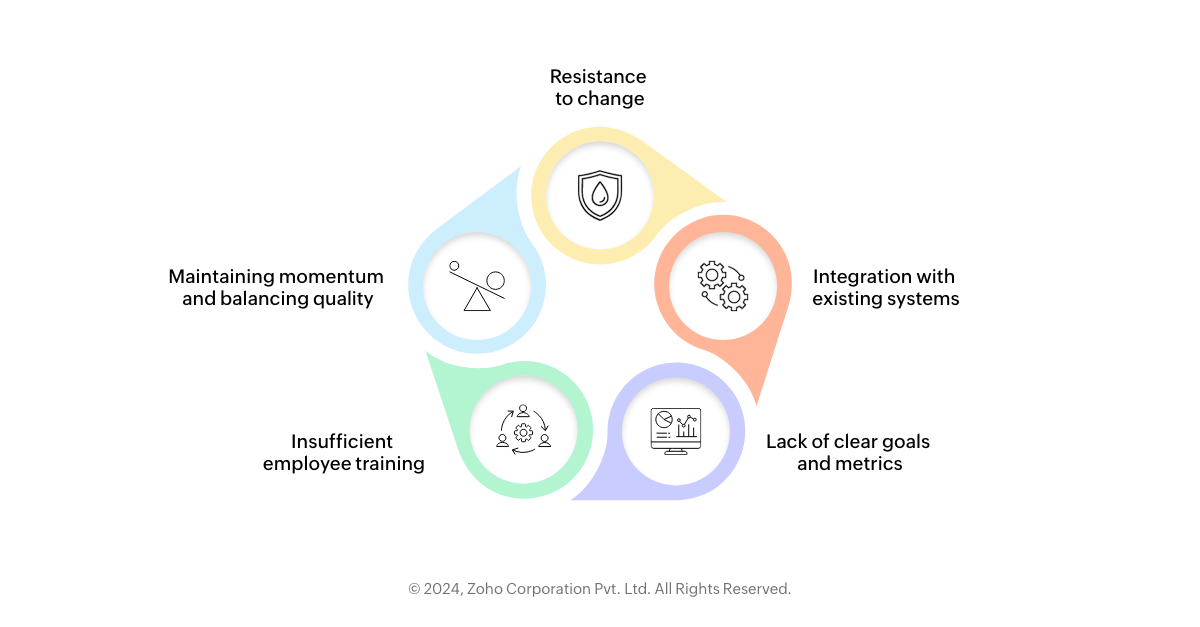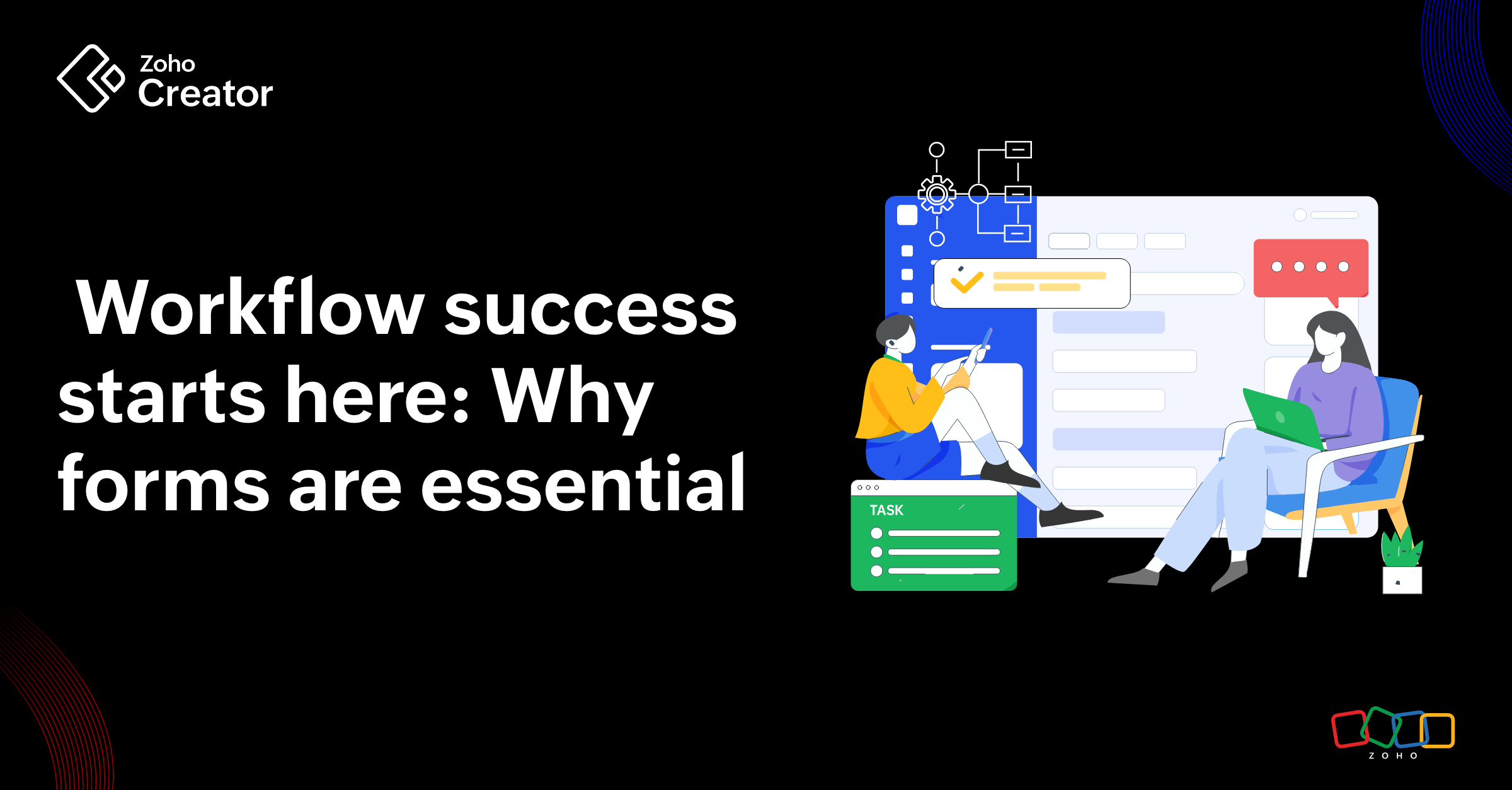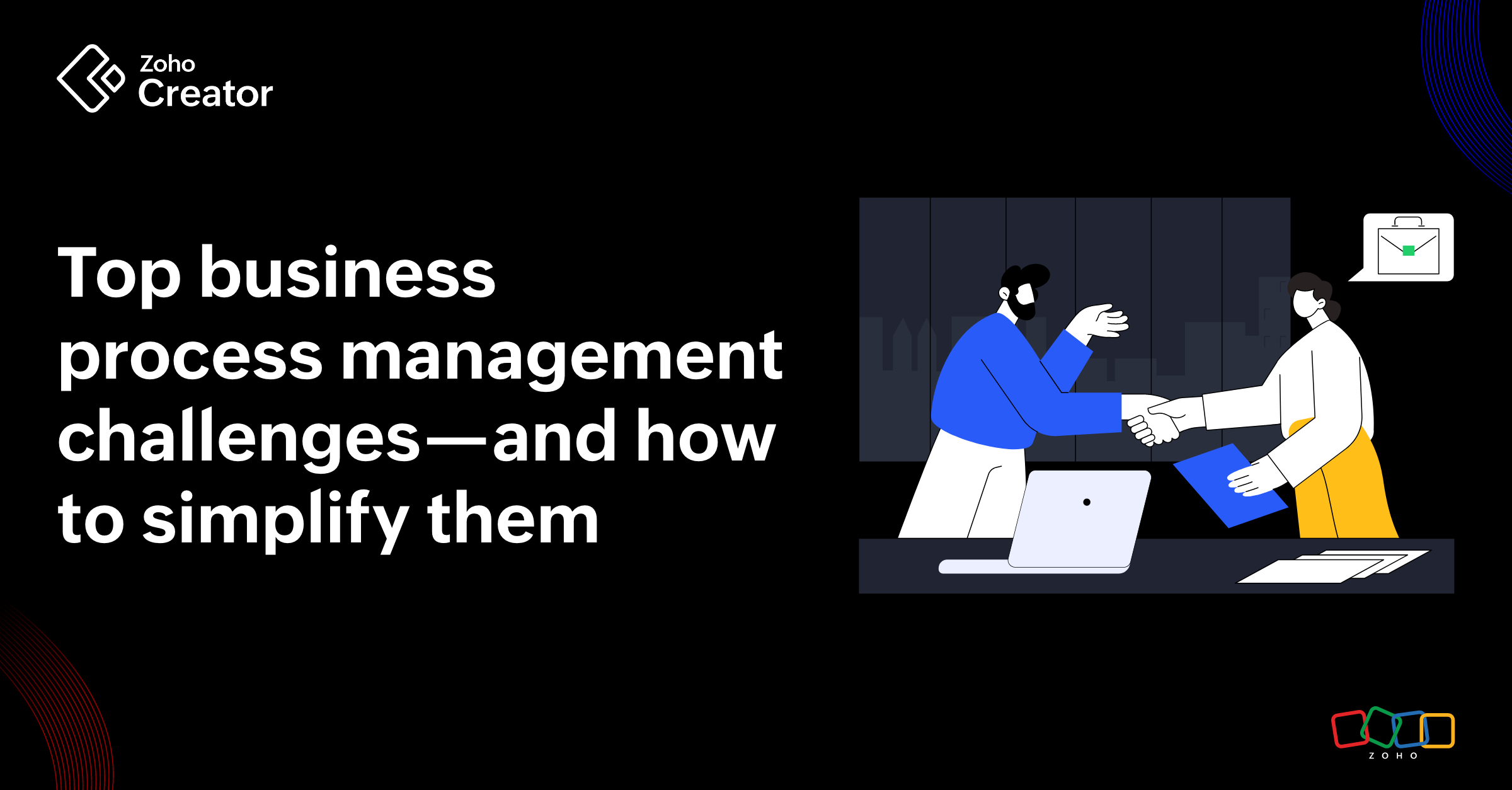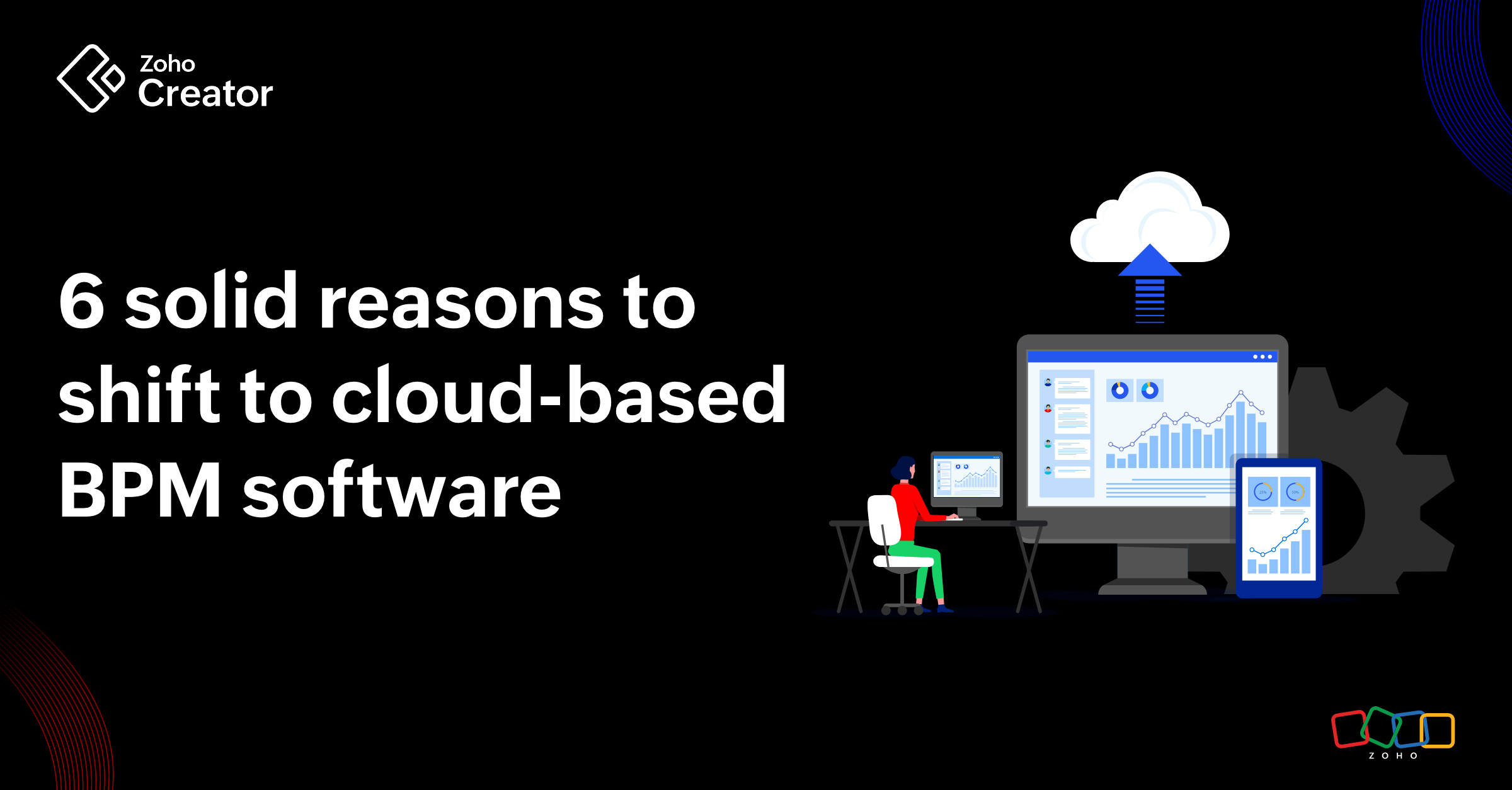- HOME
- Know Your Tech
- Business process improvement 101
Business process improvement 101
- Last Updated : November 29, 2024
- 122 Views
- 6 Min Read
What is business process improvement?
Business process improvement (BPI) represents a focused effort to identify, analyze, and enhance existing processes. Though often confused with business process management (BPM), which looks at the overall framework for managing processes, BPI specifically targets the refinement of individual processes to improve efficiency and meet new demands.
Why do we need process improvement?
Businesses need processes that will allow them to adapt without slowing down. Improving your processes can be the key to handling growth more easily, and it will help you build a foundation that keeps your team ready for anything that comes next.
But where do you start? And more importantly, how do you make sure you're picking the right solutions for your needs? Let’s walk through the steps together.
Identifying key areas for improvement
First things first—before you can improve anything, you need to know what needs fixing. Even though it seems obvious, it’s a step that often gets overlooked. So take a moment to really look at your existing business processes. Where are the issues? What’s taking longer than it should? Where are mistakes happening?
One way to get started is by gathering feedback from your team. This will help you understand if the sales team is bogged down by manual data entry, or if your customer service team is frustrated with an unorganized ticketing system.
Next, look at the data. Numbers don't lie, and they can reveal inefficiencies that you might not have noticed. Check your KPIs and see where things are lagging. After the areas for improvement are identified, prioritize them.
The role of automation in BPI
Once you've pinpointed key areas to improve, automation can make a real difference in refining each of those processes. Low-code platforms, like Zoho Creator, step in here as powerful tools that simplify improvements without having to code extensively. Instead of creating whole new systems, low-code helps tweak specific workflows, automating repetitive tasks and reducing manual errors. This leads to smoother data handling and better alignment across processes, creating consistency.
Choosing the right BPI solution and implementing it
Selecting the right business process solution depends on the specific needs of each process, and there’s no one-size-fits-all here.
If data analysis is your focus, you might need something like Tableau. For visualizing and optimizing your business processes, process mapping software like Lucidchart can be helpful.
Alternatively, low-code platforms like Zoho Creator offer a more integrated solution, combining data handling, visualization, and process automation in one place. With a single platform, you can design, analyze, and automate workflows without needing multiple tools, which makes it easier to implement.
After you see the entire process laid out, you can identify where things are slowing down and come up with a targeted process improvement strategy.
And now that you’ve chosen your solution, it’s time to implement it. This is where you’ll need to be strategic. Start small—pilot the solution in one department or on one process before rolling it out company-wide. This way, without causing major disruptions, you'll be able to troubleshoot any issues and make continuous process improvement as needed.
Let's look at a real-world example: The Tanzanite Experience, a jewellery brand based in Tanzania known for its stunning tanzanite gemstones.
This luxury retailer prides itself on providing high-quality jewellery and exceptional customer service. However, they faced challenges managing their inventory and sales processes, leading to delays and customer dissatisfaction.
By implementing a low-code solution with Zoho Creator, they were able to refine specific processes, like automating inventory tracking and synchronizing sales data. This helped reduce delays and streamline operations. And, by making these targeted improvements, they achieved smoother workflows and faster response times, which in turn elevated customer satisfaction.
Common BPI challenges and how to address them
Improving business processes isn’t without its challenges. Here are some of the most common roadblocks organizations face and practical strategies to overcome them:

Resistance to change
People naturally lean toward familiar routines and might feel unsure about new methods or tools. Resistance can stem from uncertainty, fear of failure, or simply a reluctance to leave a comfortable workflow. Address this resistance by communicating the benefits of the new system and involving the team in the process. Offering training sessions to improve skills can also ease the transition.
Integration with existing systems
Adding new tools to your established systems can get tricky. It might even slow things down by disrupting workflows if it doesn’t fit well. Before diving in, check how new tools will work with what’s already in place. Select BPI solutions that support easy integration, like Zoho Creator. Check for compatibility, and do regular reviews after implementation to identify and resolve any lingering issues before they impact productivity.
Lack of clear goals and metrics
Without defined goals or measurable outcomes, it’s hard to know if your BPI efforts are actually making a difference. Begin with a clear set of objectives and set baseline metrics before implementing any changes. This can help track progress and then adjust your approach as needed to stay aligned with your goals.
Insufficient employee training
Even the most effective process improvement strategies can fail if employees are not well-equipped to utilize new tools or follow updated procedures. This issue can be avoided by ensuring that your training sessions are not only comprehensive but also tailored to each team’s specific needs.
Maintaining momentum and balancing quality
BPI projects often start with a lot of energy and enthusiasm but lose steam as teams return to their usual routines. There's also the risk of prioritizing speed over quality, especially if the process improvements are rushed. One way to keep the momentum alive is to set up regular process reviews. In parallel to this, to balance speed with quality, consider testing changes on a smaller scale before rolling them out fully. Involve quality assurance from the beginning to make sure the improvements meet the standards your customers expect.
How Zoho Creator helps implement BPI
Platforms like Zoho Creator are designed to make business process improvements more accessible and effective. Creator’s low-code capabilities allow businesses to design workflows tailored to their needs without needing extensive technical expertise. For example, its drag-and-drop interface simplifies automation, enabling teams to quickly set up workflows that reduce manual tasks like data entry or approvals.
Beyond automation, Zoho Creator offers live data synchronization across systems, ensuring that every department stays updated and aligned. Features like custom dashboards help visualize KPIs, allowing businesses to monitor improvements and identify bottlenecks instantly. And with multi-platform integration options, you can connect existing tools effortlessly, creating a smooth ecosystem for your processes.
The Tanzanite Experience utilized these capabilities to refine their inventory and sales processes. By automating stock tracking and synchronizing sales data, they could address delays and improve customer service. These targeted improvements highlight how a business process improvement solution both fixes processes and builds a foundation for long-term agility and growth.
Moving forward with BPI
Business process improvement is about enhancing specific areas for immediate gains. Improving existing business processes is more than just optimizing workflows—it focuses on creating an organization that adapts and grows over time. By keeping goals clear and regularly assessing progress, BPI will help you pave the way for long-term success. The path may come with challenges, but, by embedding a mindset of continuous improvement, these efforts become part of a journey toward a more agile and effective organization.
Platforms like Zoho Creator can be invaluable in your process improvement plan and bring flexibility to the journey by offering custom solutions that cater specifically to your business needs.
 Ann Elizabeth Sam
Ann Elizabeth SamHey! I'm Ann, and I work as a content writer at Zoho Creator. I'm exploring the SaaS world through various forms of content creation. Outside of work, I love dancing and would give up anything to read a good murder mystery.










